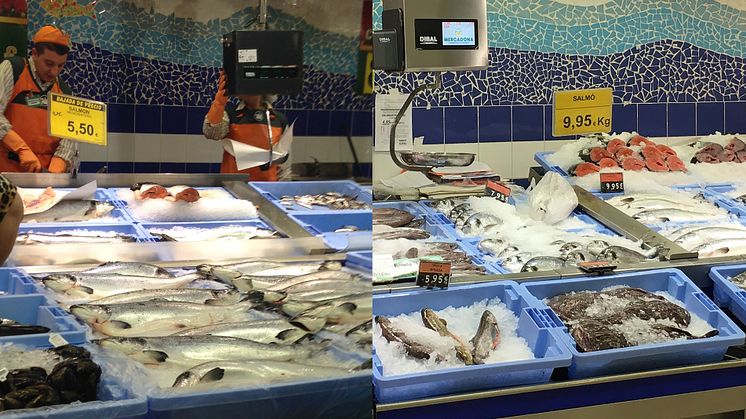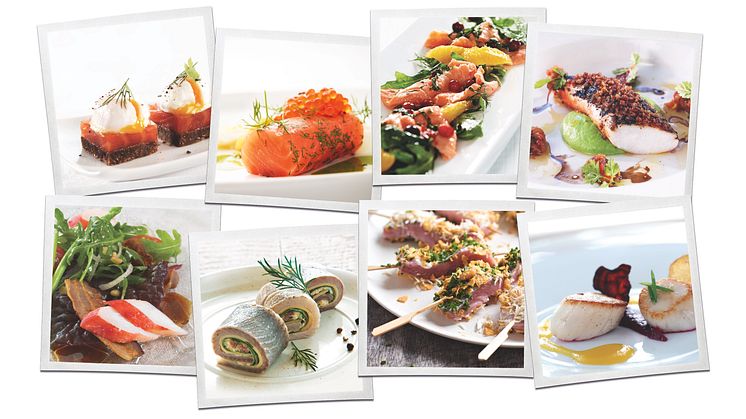
Press release -
Lower sales of salmon in Europe
The value of Norwegian salmon exports continues to grow. Sales in January were NOK 1,1 billion higher than in the previous January. However, salmon sales were reduced in Europe.
In January, Norway exported 170,000 tonnes of seafood valued at NOK 7.6 billion. This is a decrease by volume of 11 per cent, while across all categories, this represents a net increase of NOK 891 million, or 13 per cent, compared with January 2016.
”The start of the 2017 seafood year has been marked by a reduced supply of salmon from Norway and continuing high prices. It helps that less salmon has been sold in Europe, whilst more salmon is en route to the US and Asian markets. Due to late seepage and bad weather, cod harvests have also been reduced in January compared to the previous year. This has led to higher export prices for fresh cod, including seasonal skrei, but lower overall volume”, says communications director Geir Håvard Hanssen with the Norwegian Seafood Council.
Salmon sales are up
Norway exported 70,100 tonnes of salmon worth NOK 5.3 billion in January. Export volumes to the EU were reduced by 5,400 tonnes, whilst the total decline in volume across all markets was 2,700 tons. The value of salmon exports increased by NOK 1.1 billion or 25 per cent, compared with January last year.
In January 2016, the average price for fresh whole salmon was NOK 55.56 per kg. In January this year the price rose to NOK 72.37 per kg. Poland, France and Denmark were the biggest importers of Norwegian salmon. Reduced availability and high prices have impacted the supply of salmon in key European export markets. In Spain salmon has been displaced at the counter by other species of fish.
”The Spanish are fond of seafood and they have a wide variety to choose from. At the beginning of 2016 salmon enjoyed a large share of seafood counters. As prices have risen, this share has reduced, in favour of other seafood products”, says Fisheries Delegate to Spain Hilde Gunn Osmundsvåg with the Norwegian Seafood Council.
High salmon prices have contributed to a greater proportion of packaged or processed salmon being exported to Europe. The portion size is smaller with a higher consumer price tag.
”We see examples of products from fresh salmon in Germany that has risen by nearly 30 per cent since October 2016. Prices have been as high as NOK 300 per kg for pre-packaged salmon. Meanwhile, price increases in several markets have not yet been fully passed on to consumers”, says salmon analyst Paul Aandal with the Norwegian Seafood Council.
Salmon exports to Europe are in retreat, but there is still strong demand for salmon in the global market. Exports to the US increased by 1,045 tonnes last month compared with January 2016.
”Norwegian salmon is strengthening its position in the US and taking market share in a growing market. The market volume has increased from 12 per cent in 2015 to 13 per cent in 2016. In the United States new salmon products have been launched in cooperation with the major supermarket chains. This has contributed to a 30 per cent increase in export volumes, while the value of exports has increased by NOK 155 million compared to January 2016. At the same time, the limited volumes of salmon available has created an unstable market. There is great uncertainty about inflationary pressures”, says Fisheries Delegate to the United States Egil Ove Sundheim with the Norwegian Seafood Council.
Trout exports are reduced
In January, 2,600 tonnes of trout were exported with a value of NOK 201 million. Volume was reduced to 3,500 tonnes, while the reduction by value was NOK 93 million or 32 per cent compared with January 2016. Japan, Thailand and Belarus were the biggest markets for trout in January.
Fresh and frozen cod are down
4,000 tonnes of fresh cod, including trademarked Skrei cod, with a value of NOK 187 million were exported in January. The average price for fresh whole Norwegian Cod increased by 18 per cent compared to January 2016, but the value fell by NOK 15 million or 8 per cent due to a volume decline of 1100 tonnes.
Exports of trademarked Skrei cod totalled 391 tonnes, which is a decrease of 298 tonnes from January last year. The average price for Skrei cod increased by 11 per cent, but by value there was a 37 percent decline to NOK 21 million due to the lower volumes.
In January, 8,600 tonnes of frozen cod were exported with a value of NOK 265 million. This is a decrease in the volume of 1600 tonnes, while by value there was a decline of NOK 36 million or 12 per cent.
Clipfish remains stable
8,800 tonnes of clipfish were exported with a value of NOK 371 million. Both volume and value remained at the same level as January last year. Brazil was the largest market in January with an export value of NOK 235 million.
Salted fish exports trend higher
In January, 1,200 tonnes of salted fish were exported to a value of NOK 48 million. Volumes increased by 276 tonnes and by value there was an increase of NOK 14 million or 41 per cent. Portugal and Italy were the main export markets in January.
Herring exports down, but mackerel exports are up
26,200 tonnes of herring were exported with a value of NOK 311 million in January. This is a decrease by volume of 2,500 tonnes, while by value herring exports fell by NOK 45 million or 13 per cent. Ukraine and Lithuania were the main markets for herring in January.
25,000 tons of mackerel were exported in January, with a value of NOK 309 million. Volumes increased by just under 1,000 tonnes, while the value increased by NOK 47 million or 18 per cent. China and South Korea were the biggest export markets for Norwegian mackerel in January.
Topics
Categories
The Norwegian Seafood Council works with the Norwegian fisheries and aquaculture industries to develop markets for Norwegian seafood through local market intelligence, market development and reputational risk management. The Seafood Council is headquartered in Tromsø and maintains local representatives in twelve of Norway's most important international markets. The Norwegian seafood industry finances the activities of the Norwegian Seafood Council via a tariff on all Norwegian seafood exports.
The Norwegian Seafood Council is a public company owned by the Ministry of Trade, Industry and Fisheries.


